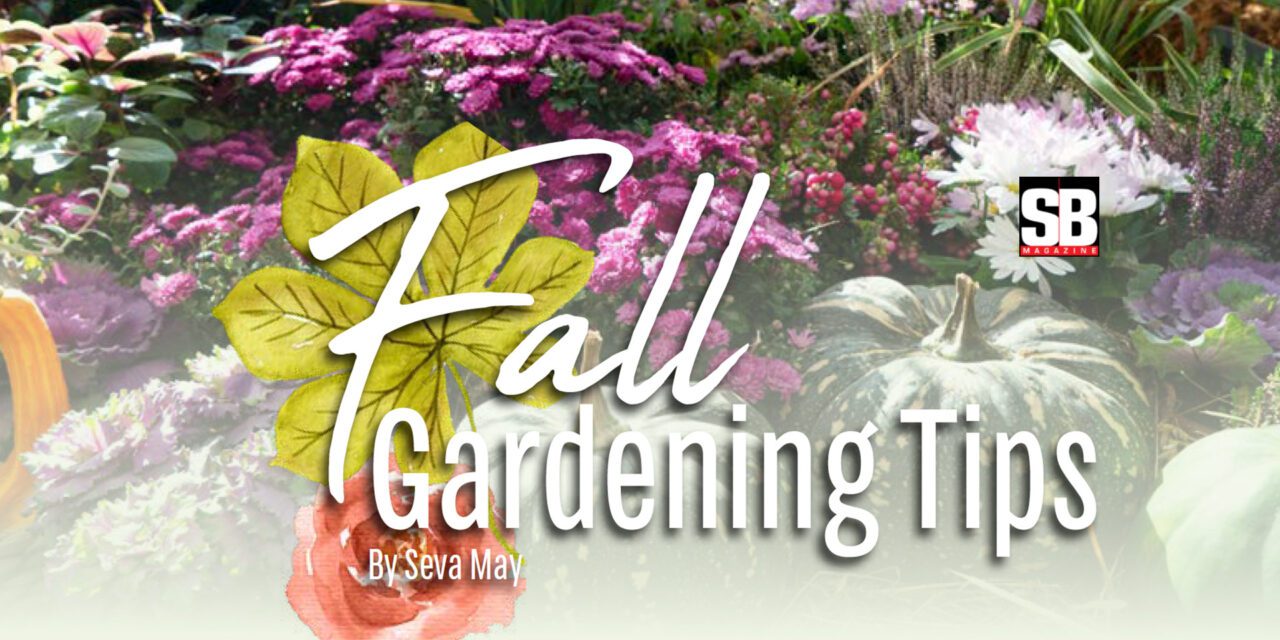Summer is fading away quickly this year (thankfully), and autumn is at our door. Yes, it’s time to begin preparations for a fall garden. To successfully navigate this transitional period, one must consider essential strategies such as preparing the garden, selecting appropriate plants, and timing the planting effectively. SB has researched a few tips to ensure a fruitful and vibrant garden as the seasons shift.
1.Preparation:
Assess the soil quality by testing the pH levels and nutrient composition. Added compost or well-rotted manure, can enhance soil fertility.
2.Plant selection:
Perennial flowers that thrive in cooler weather and add vibrancy to the garden landscape. Plants like asters, chrysanthemums, and sedums not only bloom beautifully but also provide vital sustenance for pollinators preparing for winter. Ornamental plants such as ornamental cabbage and kale, as well as colorful grasses, can create visual interest and texture in the garden. The strategic selection of these plants ensures that the garden remains lively and productive throughout the fall season.
3.Timing:
Understanding the first frost dates in our region is essential for planning the planting schedule.
4.Maintenance:
This ensures that plants remain healthy and productive as the temperatures drop. Implement proper watering techniques; cooler temperatures often lead to reduced evaporation rates, which can mislead gardeners about the moisture needs of their plants. Check the soil moisture regularly and adjust watering schedules accordingly, as overwatering can lead to root rot and other complications.
5.Fertilization:
Strategies for fall gardens should be tailored to the specific needs of each plant. A balanced fertilizer, rich in phosphorus and potassium, can support root development and prepare plants for the stress of winter. It’s also advisable to apply fertilizers later in the season to avoid stimulating excessive growth that may not have time to harden off before frost.
6.Protection:
Pests, such as aphids and spider mites, can thrive in the fall, often seeking refuge in the more sheltered environments of gardens. Keeping your garden clean by removing any debris or diseased plants can help reduce the likelihood of disease outbreaks, ensuring a healthier garden environment.
7.Mulching:
Select appropriate mulch materials. Organic options such as straw, shredded leaves, and wood chips are excellent choices that not only suppress weeds but also enrich the soil as they decompose. Mulch helps retain moisture in the soil, which becomes increasingly important as the days grow shorter, and rainfall becomes less predictable. Mulching regulates soil temperature, creating a more stable environment for plant roots as they transition into the cooler months. A layer of 2 to 4 inches is typically recommended, ensuring that the mulch is spread evenly around the base of the plants but not touching the stems to prevent rot. Regularly replenishing mulch as it breaks down. Applying a thick layer of mulch around the base can help protect roots from freezing temperatures.










